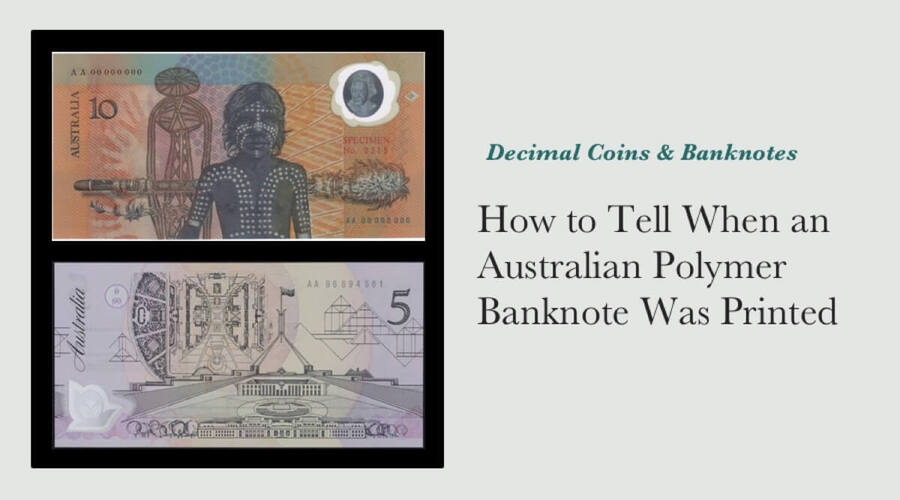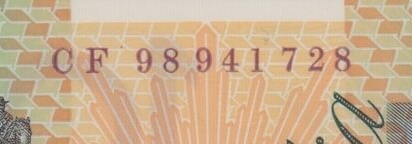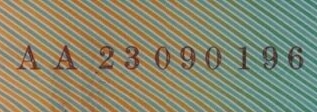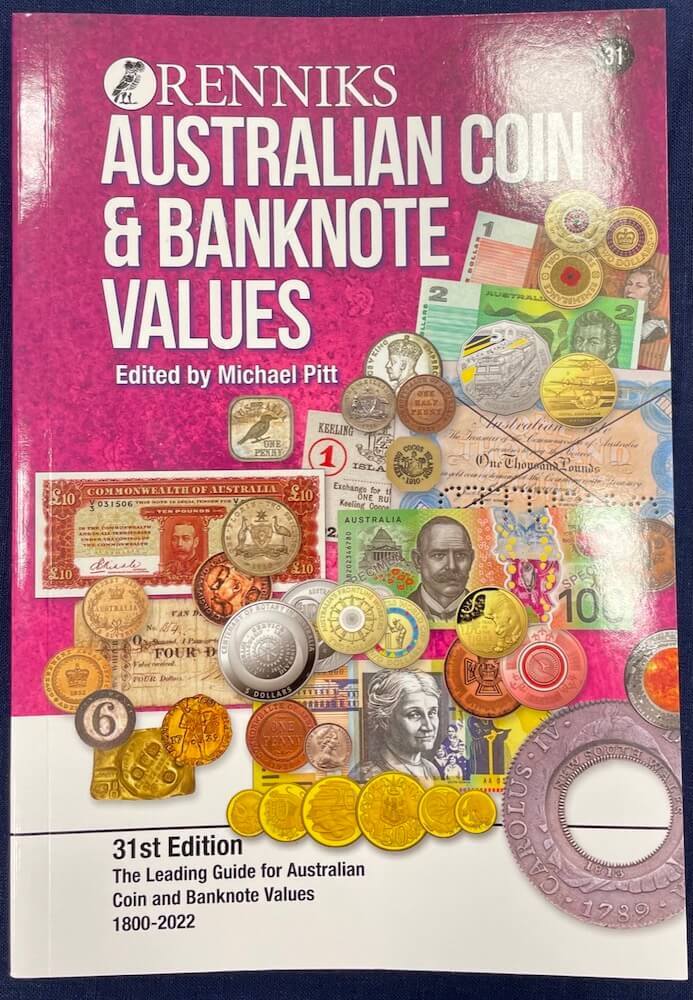How to Tell When an Australian Polymer Banknote Was Printed

The first Australian polymer banknotes were printed in 1988 to mark Australia’s bicentenary. It was a $10 commemorative note and set the stage for the gradual transition to polymer notes to replace the paper banknotes we had used since the 1966 introduction of decimal currency.
The first series of polymer banknotes were introduced progressively from 1992 - 1996. Between 2016 - 2020 they were replaced by a second series.
Australia Polymer Banknote Serial Numbers
There are three parts to the serial number of an Australian polymer banknote. The first is a 2-3 letter prefix, e.g. AA or JK. The two numbers that follow indicate the year the note was printed, e.g. AA10 indicates the note was printed in 2010 or CF98 indicates the note was printed in 1998.

1998 CF98 $100 Banknote

2010 AA10 $100 Banknote
The first series of polymer banknotes has a six-digit suffix while the second series has a seven-digit suffix. Depending on the length of the prefix and which series the note comes from, the serial number will be between 10-12 characters in length and is printed at least once on the face of the note.
Much attention is given to the serial numbers and prefixes of banknotes because this is often where you will find the most value in a banknote. For instance, last prefix banknotes, i.e. the last banknotes printed in a run, will generally attract a higher value than first prefix banknotes.
Exceptions to the Rule
This method of dating Australian polymer banknotes was first introduced in 1993. All banknotes since that time have followed the same model. If you want to know the year a banknote was printed, check the serial number and you will have your answer.

1988 Bicentennial $10 Note

1992 Pale $5 Note
However, it’s not quite as straightforward as that for all notes. There are two banknotes which don’t have a date in their serial number. These are the 1988 bicentennial $10 note and the 1992 (pale) $5 note. Thankfully because there are only two notes, each from a single year, that do not follow the yearly numbering system, it is a simple process of exclusion to determine which year they were printed.
These notes are actually the reason why the current ‘Year-Dated System’ came into place. The volume of notes being printed over a period was so great that they ran out of serial numbers. Switching to an annual numbering system prevented this from happening.
Checking the Value of Your Australian Banknote
Most people want to know the year a banknote was printed in is so they can get an idea of what it is worth.
It’s really important to note that while some Australian polymer banknotes are incredibly rare and valuable, most are not. As at June 2020, there were 1.8 billion banknotes in circulation. Looking for a rare and valuable note is like searching for a needle in a haystack.
If you have a banknote in your possession that you think might be valuable, Rennik’s Guide is a good place to start. You will be able to cross-check your prefix and serial number to learn more about the banknote and how much you could possibly fetch for it as a collector’s item.
Comments (1)
Printing query
By: Lyn on 4 September 2025Hello, thanks for the information on serial numbers. I have just received the Rennicks 33rd edition and I notice in the note section that there are no $100 listed after 2023. Even more surprising was no information about $10 notes since 2017. Can you tell me please, is it because no new notes have been minted for dates after those years. Regards Lyn
Sterling and Currency Response
Lyn, The RBA publishes information on which denominations are printed each year and how many of those denominations are printed. You can view it via this link: https://banknotes.rba.gov.au/resources/for-collectors/serial-numbers/
